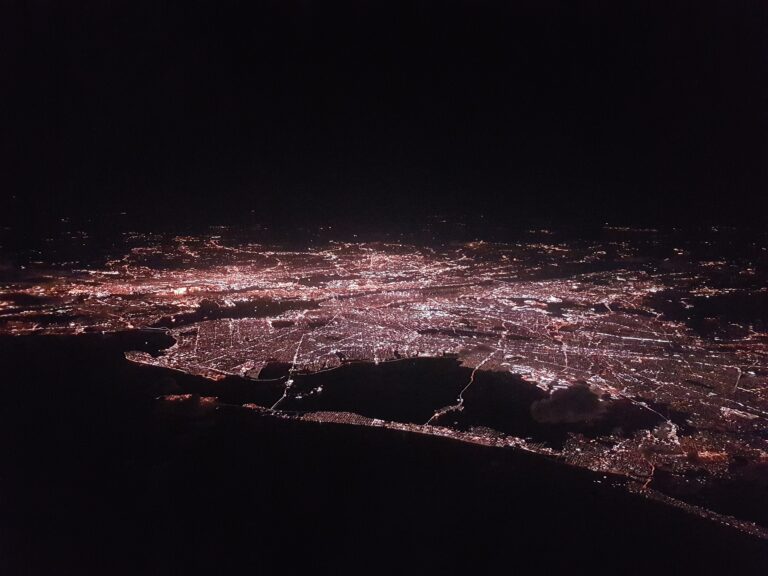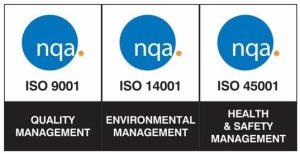
Article written by Martin Christensen, Senior Consultant at OCA
Current Market Outlook
The US offshore wind industry is poised to explode over the next decade, particularly now the new US President has made such a clear policy push in support of the blue economy generally, and offshore wind specifically[1].
State run renewable portfolio standards, executive orders, self-mandated renewable quotas from utilities and burgeoning societal pressure for greater renewable generation will drive demand for this largely untapped resource. Equally importantly, increase in demand will lead to the decrease in costs across the industry. Due to new technologies, economies of scale and competition among developers, the Levelized Cost of Electricity (LCOE) from offshore wind has dropped significantly making it more competitive with traditional power generation alternatives.
While estimates vary slightly, industry experts anticipate that US offshore wind capacity will grow from its current capacity of 30MW to between 20,000[2] and 30,000MW[3] by 2030. By the mid-2020s it is anticipated that this extreme growth will be funded by annual capital expenditures (CAPEX) of approximately $15BN putting offshore wind on-par with the O&G sector in terms of annual capital investment. 1 The future is bright for this nascent industry. Nevertheless, such fast development always comes with significant challenges.
The Interconnection Problem
Connecting the new generation capacity to the existing grid is one of the biggest issues facing the industry. The projects that have won lease agreements with BOEM range in size from 120MW[4] all the way up to 2,600MW[5] with the average wind farm anticipated to produce approximately 800MW. These numbers represent extraordinary amounts of electricity. To put things into perspective, a single MW of power is capable of powering hundreds of homes. Clearly, a massive amount of power generation is scheduled to be built out in the ocean in the very near future.[6]
Harnessing all that power and bringing it onshore is no easy task. The country’s electrical grid was not built-in anticipation of routing large amounts of electricity from offshore windfarms to the grid, via subsea export cables. Existing electrical grid infrastructure along the eastern seaboard, where most of the new generation will be constructed, does not have the ability to accept the anticipated increase in supply. The problem is exemplified by a report from the New York Energy Highway Initiative which estimates $5.7b in grid infrastructure upgrades are needed across the state to harness 3.2GW of offshore wind.[7] One of the biggest issues facing states in the Northeast is the lack of suitable construction sites for new switchyards within proximity of the coastline. Cities such as Philadelphia, Boston and New York have incredible electricity demand but equally developed shorelines.
Existing substations inland have a capacity to accept the additional power. But while an increase in distance from a project site provides more interconnection opportunities, it also creates significantly more risk for developers. Permitting becomes a greater challenge due to the direct correlation between the distance inland and the number of people that will be impacted by a project. Construction of a large substation and the laying of new cables is a time intensive process and requires the uses of heavy machinery. The greater the disruption to local communities the stronger the pushback will be. Furthermore, the heightened costs of bringing the power inland have a negative impact on a project’s business case, often to the point where the project becomes economically unviable. A review of multiple offshore wind projects by the National Renewable Energy Laboratory (NREL) in 2018 found that electrical infrastructure accounts for twenty-five percent of a project’s CAPEX.[8] Large export cables are not cheap, and neither are the construction methods needed to bury them deep in the ground. Any increase in the distance from the landing point onshore to the grid connection has a negative effect on a project’s finances. Currently, developers are responsible for all costs associated with connecting their projects to the grid so the greater the capital requirement the less likely a project will be economically viable.[9]
Opportunities
Industry experts believe the Northeast grid, without any upgrades, can only accept up to 4GW of offshore wind capacity. [10] With most new offshore wind projects being developed in the Northeast, supply will outstrip grid capacity in the not-too-distant future. However, the 4GW of capacity will buy the industry, states, and developers precious time to figure out solutions to the interconnection problem. Until that time, developers are focusing on opportunities created by the shift in the energy industry away from traditional power generation sources.
Historically, many nuclear, coal and oil-fired power plants have been constructed near the ocean. These facilities create an enormous amount of heat and require large quantities of water for cooling purposes. Additionally, thermal plants require massive shipments of coal and oil to power their turbines. Marine transportation, via large oil tankers and colliers, is one of the few ways to efficiently deliver enough oil and coal to power plants.
No longer competitive, these power plants are winding down operations and closing their doors. The switchyards that once connected the plants to the grid can now be used to support the offshore wind industry. One such example is Brayton Point Power Station. The 1600MW coal fired power plant was decommissioned in 2017 and demolished in 2020.[11] The site is now being repurposed into a Renewable Energy Center that aims to be a landing point for up to 1200MW of offshore wind.[12]
The availability of these assets and their ability to support the wind industry is also demonstrated by Orsted’s Ocean Wind project off the coast of New Jersey. The 1,100 MW project recently received approval from the New Jersey Board of Public Utilities (NJBPU) to interconnect to both the Oyster Creek nuclear facility which was retired in 2018 and to the retired BL England coal plant which shut its doors in 2019[13]. The deal between the developer and the state will save the project tens of millions of dollars in capital costs.
The use of new and different technologies to overcome space requirements is another area of opportunity for US developers. One specific example could be a greater reliance on and use of Gas Insulated Switchgear (GIS). This type of switchgear is much more compact than the traditional air-insulated switchgear found in most switchyards. Their small footprint has proven to be popular in urban areas in other parts of the world. In the late 1960s, due to high population density of their country, the Japanese began developing and using this technology with great success.[14] While more costly than traditional air-insulated switchgear, large scale adoption of the technology for onshore substations in the US could help to drive down prices.
The offshore wind industry began in Europe and over the past three decades the continent has built dozens of offshore wind farms. The European markets use a different approach to grid operation than what is currently planned in the US. Once a project reaches commercial operation, the project owners sell the export cables to a third party. For example, TenneT, a transmission system operator headquartered in the Netherlands currently manages the transmission links for over 7GW of offshore wind capacity coming from twelve separate projects.[15] Slowly, entire offshore power grids are being created and managed similar to Regional Transmission Organization with onshore grids in the US. This power grid structure enables the connection of multiple projects to the grid through a controlled and coordinated approach, rather than on a first come first served basis.
Summary
The opportunity for offshore wind to decrease carbon emissions and provide long lasting economic benefits in the United States is finally here. However, there are real challenges facing the industry in terms of grid capacity and solving the interconnection problem will not happen overnight.
The issue is a complicated one and a collective and cooperative approach is required there to alleviate all the grid constraints. Strong and consistent communication between various stakeholders, including grid operators, offshore wind developers, local and state representatives and federal government policy makers is required from an early stage, and will become ever more important as more projects are put forward.
[1] https://www.whitehouse.gov/briefing-room/statements-releases/2021/03/29/fact-sheet-biden-administration-jumpstarts-offshore-wind-energy-projects-to-create-jobs/
[2]https://renews.biz/57545/us-offshore-wind-to-hit-20gw-by-2030/
[3] https://www.rechargenews.com/wind/us-offshore-wind-to-spark-jobs-boom-as-sector-invests-up-to-57bn-awea/2-1-771692
[4] https://en.wikipedia.org/wiki/List_of_offshore_wind_farms_in_the_United_States
[5] https://news.dominionenergy.com/2019-09-19-Dominion-Energy-Announces-Largest-Offshore-Wind-Project-in-US
[6] https://www.eia.gov/outlooks/aeo/pdf/electricity_generation.pdf
[7] https://www.nypa.gov/innovation/initiatives/ny-energy-highway
[8] https://www.nrel.gov/docs/fy20osti/74598.pdf
[9]https://www.mckinsey.com/~/media/McKinsey/Industries/Electric%20Power%20and%20Natural%20Gas/Our%20Insights/Scaling%20the%20US%20East%20Coast%20offshore%20wind%20industry%20to%2020%20gigawatts%20and%20beyond/Scaling-the-US-east-coast-offshore-wind-industry-to-20-gigawatts-and-beyond.pdf
[10] https://nawindpower.com/report-the-biggest-priorities-for-advancing-u-s-offshore-wind
[11] http://www.braytonpointcommercecenter.com/updates/
[12] https://anbaric.com/braytonpoint/
[13] https://www.njspotlight.com/2020/03/bpu-green-lights-agreement-to-bring-offshore-wind-power-ashore-at-b-l-england/
[14] https://toshiba-mirai-kagakukan.jp/en/learn/history/ichigoki/1994transformer/index.htm
[15] https://www.4coffshore.com/news/tennet-bolsters-transmission-capacity-to-over-7gw-nid16675.html

